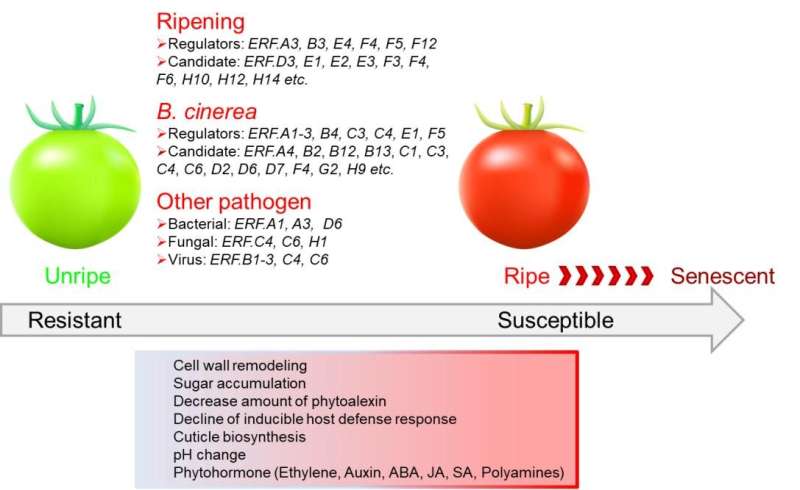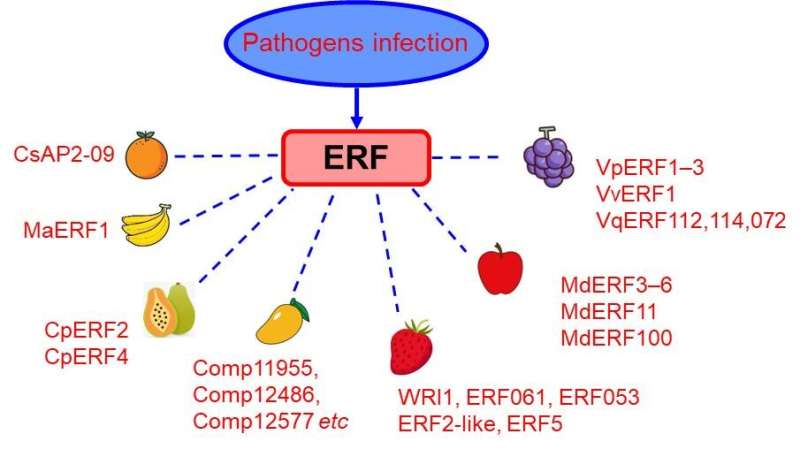The role of ethylene response factors in regulating fruit ripening and pathogen response

The changes that occur in fleshy fruits during ripening make them more sensitive than unripe fruit to infection by bacteria and fungi. The challenge for fruit production is to balance fruit ripening and pathogen resistance to maintain postharvest fruit quality. Understanding the underlying processes of ripening control and the pathogen response may provide novel approaches for engineering improvements to fruit quality and pathogen resistance.
Ethylene response factor (ERF) transcription factors play important roles in various aspects of fruit ripening, and also in fleshy fruit resistance to pathogens.
Researchers from the Wuhan Botanical Garden (WBG) of the Chinese Academy of Sciences, together with collaborators from University of Nottingham and Zhejiang University, have reviewed and summarized the current studies of ERFs in fruit ripening and fruit resistance to pathogens, as part of an investigation into novel approaches for altering transcriptional regulation to improve fruit quality and pathogen resistance.
According to the researchers, fleshy fruits are classified as climacteric (peach, durian, apple, banana, papaya, mango) or non-climacteric types (citrus, strawberry, watermelon, grape). As summarized of the ERF study on these fleshy fruits, ERFs are widely reported to be involved in ripening regulation and responses to fungal, bacterial and virus infection.
Different ERFs regulate aspects of ripening and responses to infection and are involved in the stress-related synthesis of pathogenesis-related proteins, phytohormones ethylene and jasmonic acid signaling pathways. For example, in tomatos, key ERF genes are recognized to regulate ripening, responses to infection, or both have been identified.

Further study of the molecular mechanism and the regulatory interactions between these regulators may reveal opportunities for improving fruit resistance and quality.
Relevant results were published in Cells, titled "Contrasting Roles of Ethylene Response Factors in Pathogen Response and Ripening in Fleshy Fruit."
More information: Shan Li et al, Contrasting Roles of Ethylene Response Factors in Pathogen Response and Ripening in Fleshy Fruit, Cells (2022). DOI: 10.3390/cells11162484
Provided by Chinese Academy of Sciences


















